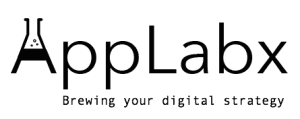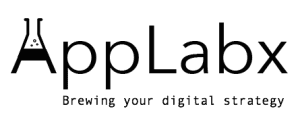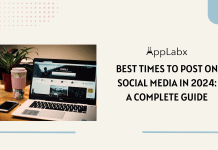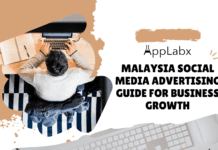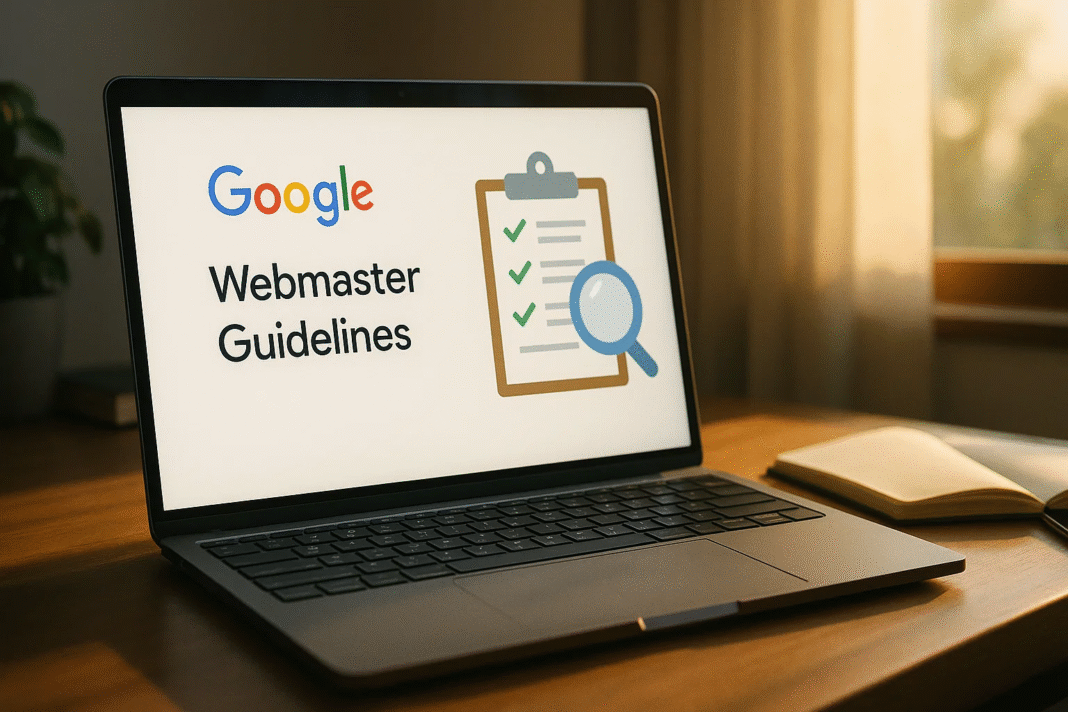Key Takeaways
- Google’s Webmaster Guidelines provide essential best practices for maintaining a search-friendly and compliant website.
- Adhering to these guidelines helps improve rankings, user experience, and avoid algorithmic or manual penalties.
- Regular audits, quality content, and ethical SEO strategies are key to long-term compliance and visibility in search results.
In the ever-evolving digital ecosystem, search engine visibility is one of the most valuable assets a website can have. As billions of searches are made every day on Google, ranking high in search engine results pages (SERPs) is no longer just an advantage — it is a necessity for online success. But achieving and maintaining top rankings requires more than just well-written content or appealing web design. It demands strict adherence to a framework of best practices laid out by none other than Google itself — known as Google’s Webmaster Guidelines.

These guidelines serve as a foundational blueprint for building websites that are both user-friendly and search-engine-friendly. Designed to ensure that websites deliver high-quality content and maintain technical integrity, the Webmaster Guidelines are Google’s way of creating a level playing field for everyone competing for online visibility. Whether you’re a business owner, digital marketer, developer, or SEO professional, understanding and following these rules is essential for staying in Google’s good graces.
Originally introduced to combat webspam and promote ethical optimization techniques, Google’s Webmaster Guidelines have evolved over the years in response to new technologies, shifting user behaviors, and increasingly sophisticated black-hat SEO tactics. Today, they encompass a wide range of practices — from how your content is structured and your website is coded, to the quality of your backlinks and the authenticity of your user experience.
Ignoring or violating these guidelines can have serious consequences. Websites found to be in breach may suffer from suppressed rankings, algorithmic downgrades, or even complete removal from Google’s index through manual actions. On the flip side, websites that proactively align with Google’s standards often benefit from improved crawling, indexing, visibility, and trust — all of which contribute to better rankings and increased organic traffic.
Yet despite their importance, many webmasters either overlook the guidelines or misunderstand how they work in practice. Some interpret them as rigid rules, while others see them as vague suggestions. The truth lies somewhere in between. Google’s Webmaster Guidelines are not just arbitrary instructions — they are reflective of Google’s broader mission to organize the world’s information and make it universally accessible and useful. By adhering to them, you’re not just optimizing for search engines; you’re improving the overall experience for your users.
In this comprehensive guide, we’ll break down exactly what Google’s Webmaster Guidelines are, explore how they function behind the scenes, and examine their practical impact on SEO performance in 2025 and beyond. You’ll gain insights into the key areas they cover, including technical SEO, content quality, and link practices — along with actionable strategies for ensuring your website remains compliant, competitive, and resilient in the face of algorithm updates.
Whether you’re launching a new site, recovering from a penalty, or simply aiming to improve your SEO fundamentals, this article will equip you with the knowledge needed to align your digital presence with Google’s expectations — and thrive because of it.
But, before we venture further, we like to share who we are and what we do.
About AppLabx
From developing a solid marketing plan to creating compelling content, optimizing for search engines, leveraging social media, and utilizing paid advertising, AppLabx offers a comprehensive suite of digital marketing services designed to drive growth and profitability for your business.
AppLabx is well known for helping companies and startups use SEO to drive web traffic to their websites and web apps.
At AppLabx, we understand that no two businesses are alike. That’s why we take a personalized approach to every project, working closely with our clients to understand their unique needs and goals, and developing customized strategies to help them achieve success.
If you need a digital consultation, then send in an inquiry here.
What are Google’s Webmaster Guidelines and How They Work
- What Are Google’s Webmaster Guidelines?
- Core Areas Covered by Google’s Webmaster Guidelines
- How Google Uses These Guidelines
- How to Stay Compliant with Google’s Webmaster Guidelines
- What Happens When You Violate Google’s Guidelines?
1. What Are Google’s Webmaster Guidelines?
Google’s Webmaster Guidelines are a comprehensive set of best practices created by Google to help website owners and webmasters build high-quality websites that are optimized for search engines and, more importantly, for users. These guidelines serve as a foundational roadmap for maintaining the technical health, content quality, and ethical SEO practices of a website. Adhering to these standards ensures that a site is both discoverable and trustworthy in the eyes of Google.
Overview and Purpose
Why Google Created These Guidelines
- To maintain the quality of search results by discouraging spam and manipulation.
- To promote ethical and sustainable SEO practices.
- To educate webmasters on building user-centric websites.
- To protect users from deceptive or harmful online content.
Google’s Ultimate Goal
- Deliver the most relevant, high-quality, and trustworthy content in search results.
- Ensure a positive user experience for all searchers.
Types of Guidelines Issued by Google
Google’s Webmaster Guidelines are divided into three main categories:
| Category | Description | Examples |
|---|---|---|
| Technical Guidelines | Ensure your site can be crawled and indexed effectively. | XML sitemaps, robots.txt, mobile usability |
| Quality Guidelines | Avoid manipulative or deceptive practices that could harm rankings. | Link schemes, cloaking, hidden text |
| Content Guidelines | Focus on creating useful, original, and user-focused content. | Avoid duplicate content, keyword stuffing, AI-generated spam |
Who Should Follow Google’s Webmaster Guidelines?
- Website Owners: To ensure long-term organic traffic and brand credibility.
- SEO Agencies & Consultants: To apply ethical SEO practices and avoid client penalties.
- Web Developers & Designers: To create structurally sound websites that meet SEO requirements.
- Content Creators & Bloggers: To produce helpful, relevant, and optimized content.
Breakdown of Google’s Webmaster Guidelines
1. Technical Guidelines
These ensure that Google’s crawlers can discover, render, and index content effectively.
Key Areas:
- Ensure all important pages are accessible:
- Use clean and crawlable URLs.
- Submit an XML sitemap.
- Avoid blocking important pages in
robots.txt.
- Mobile-first indexing:
- Design for mobile usability first.
- Use responsive design over separate mobile URLs.
- Improve page speed and performance:
- Compress images and enable browser caching.
- Minimize use of JavaScript that blocks rendering.
- Use structured data markup (Schema.org):
- Helps Google understand the context of your content.
- Improves visibility in SERPs through rich snippets.
Technical Compliance Checklist
| Element | Tool for Checking | Status/Goal |
|---|---|---|
| Mobile Usability | Google Search Console | Mobile-Friendly |
| Page Speed | Google PageSpeed Insights | 90+ Score |
| Crawl Errors | Screaming Frog / GSC | No errors |
| Structured Data Validity | Rich Results Test / Schema Validator | All valid items |
| Secure Site (HTTPS) | Any browser or SSL checker | HTTPS enabled |
2. Quality Guidelines
Focus on discouraging deceptive practices and promoting ethical SEO behavior.
Common Violations to Avoid:
- Automatically generated content:
- Content created purely by AI without human oversight or added value.
- Participating in link schemes:
- Buying or selling links that pass PageRank.
- Excessive link exchanges.
- Cloaking and sneaky redirects:
- Showing different content to users than to Googlebot.
- Hidden text or links:
- White text on a white background, CSS tricks to hide elements.
- Scraped content:
- Republishing content from other sites without adding original value.
Quality Signal Matrix
| Practice | Acceptable | Risky | Prohibited |
|---|---|---|---|
| Guest posting for value | ✓ | ||
| Paying for dofollow links | ✓ | ✓ | |
| Creating AI-assisted content | ✓ (if reviewed) | ✓ (if spammy) | ✓ (if auto-generated) |
| Rewriting scraped content | ✓ | ✓ | |
| Cloaking | ✓ |
3. Content Guidelines
Creating content that is useful, unique, and satisfies user intent is central to Google’s guidelines.
Best Practices:
- Create high-quality, original content:
- Solve a specific problem or answer a user’s question.
- Use a clear structure with headings, bullet points, and visuals.
- Focus on E-E-A-T (Experience, Expertise, Authoritativeness, Trust):
- Include author bios, credentials, and links to relevant sources.
- Cite data and research from authoritative sites.
- Avoid content designed purely for ranking:
- Keyword stuffing.
- Low-value or doorway pages.
- Update content regularly:
- Refresh facts, statistics, and examples to stay relevant.
Content Evaluation Table
| Metric | Poor Content Example | High-Quality Content Example |
|---|---|---|
| Originality | Copied from Wikipedia | Original blog with cited research |
| Expertise | No author info, random opinions | Author with credentials and cited experience |
| Trustworthiness | No HTTPS, aggressive ads | Secure site, no ad clutter |
| Readability | Large walls of text | Structured with H2s, lists, and images |
| Value to the User | Repetitive and vague content | Actionable, insightful, and in-depth guidance |
Examples of Guideline Application
Example 1: Technical Compliance
A real estate website improved its crawlability by:
- Submitting a sitemap.
- Resolving duplicate content with canonical tags.
- Fixing broken internal links.
Result: +40% increase in organic impressions over 3 months.
Example 2: Quality Penalty Recovery
A fashion blog received a manual penalty for buying backlinks. They:
- Identified toxic links using Ahrefs.
- Used the Disavow Tool.
- Submitted a reconsideration request.
Result: Penalty lifted in 6 weeks, rankings gradually restored.
Example 3: Content Strategy Upgrade
An educational website rewrote thin pages using E-E-A-T principles:
- Added expert bios.
- Included FAQs, updated examples, and supporting visuals.
Result: Organic traffic doubled within 4 months.
Conclusion of Section
Google’s Webmaster Guidelines are not simply recommendations — they are essential rules that define how websites should be built, optimized, and maintained. From technical SEO to content strategy and ethical practices, these guidelines reflect Google’s focus on quality, relevance, and user-first experiences.
In the next sections, we’ll explore how these guidelines are enforced, both algorithmically and manually, and how webmasters can remain compliant while optimizing their site for long-term SEO success.
2. Core Areas Covered by Google’s Webmaster Guidelines
Google’s Webmaster Guidelines are built upon three fundamental pillars: Technical Best Practices, Quality Standards, and Content Guidelines. These core areas work in unison to ensure that websites meet Google’s expectations for crawling, indexing, ranking, and delivering value to users. Each area is essential for a comprehensive SEO strategy and directly impacts how Google perceives and ranks a website.
1. Technical Guidelines
Technical guidelines ensure that Googlebot can efficiently crawl, index, and understand your website content. This is the foundation of all search visibility.
1.1 Crawlability and Indexability
- Use robots.txt to manage access to important site sections.
- Ensure that no valuable content is blocked by accident.
- Submit a properly formatted XML sitemap via Google Search Console.
Example:
A blog blocked its /blog directory in robots.txt, which caused all blog posts to be excluded from indexing. Removing the block and resubmitting the sitemap restored visibility.
1.2 Mobile Usability
- Google uses mobile-first indexing. The mobile version is the primary version for ranking.
- Implement responsive web design to provide a consistent experience across devices.
- Ensure clickable elements are spaced appropriately and fonts are legible on small screens.
1.3 Site Speed and Performance
- Use tools like PageSpeed Insights or Lighthouse to identify issues.
- Optimize images, minify CSS/JS, and enable browser caching.
- Reduce server response times with better hosting or CDN usage.
1.4 Secure Connections
- Sites should serve content over HTTPS.
- SSL certificates are considered a ranking factor and boost user trust.
1.5 Structured Data
- Implement Schema.org structured data for key content types (articles, products, reviews, events).
- Helps enhance your listings in SERPs with rich results (e.g., stars, price, availability).
Technical Optimization Checklist
| Element | Tool to Audit | Recommended Status |
|---|---|---|
| XML Sitemap | Google Search Console | Submitted and up-to-date |
| Mobile Usability | Mobile-Friendly Test | 100% mobile-friendly |
| Page Speed (Core Web Vitals) | PageSpeed Insights | Largest Contentful Paint < 2.5s |
| HTTPS | SSL Checker / Browser | Valid certificate, no mixed content |
| Structured Data | Rich Results Test | No errors or warnings |
2. Quality Guidelines
Quality guidelines focus on avoiding manipulative tactics and ensuring that your website adheres to Google’s expectations for ethical behavior and transparency.
2.1 Avoiding Deceptive Practices
- Cloaking: Never show different content to users and search engines.
- Sneaky redirects: Do not redirect users to irrelevant pages.
- Hidden text/links: Avoid placing hidden elements for keyword manipulation.
Example:
A travel website used hidden text with exact-match keywords under white backgrounds. Google flagged the site, and rankings dropped drastically. Removing hidden elements restored partial visibility.
2.2 Link Schemes and Manipulative SEO
- Do not buy or sell links that pass PageRank.
- Avoid excessive reciprocal linking or automated link generation.
- Use
rel="nofollow"orrel="sponsored"attributes when appropriate.
| Type of Link Activity | Google’s View | Risk Level |
|---|---|---|
| Natural editorial links | Allowed & Encouraged | None |
| Paid dofollow links | Violation | High |
| Footer sitewide links | Risky if excessive | Medium |
| Link exchanges (excessive) | Violation | High |
| Guest posting (value-driven) | Allowed (if natural) | Low |
2.3 User Experience and Site Behavior
- Avoid aggressive interstitials, auto-playing videos, or misleading navigation.
- Create clear site architecture with intuitive navigation and internal linking.
- Limit ads above-the-fold that interfere with content.
3. Content Guidelines
Google prioritizes websites that offer original, helpful, and people-first content. This is aligned with Google’s E-E-A-T framework: Experience, Expertise, Authoritativeness, Trustworthiness.
3.1 Unique, Valuable, and Original Content
- Avoid duplicate or auto-generated pages.
- Answer user queries with depth and clarity.
- Use content formats like tutorials, videos, and FAQs to increase engagement.
3.2 Proper Use of Keywords
- Avoid keyword stuffing (repeating keywords unnaturally).
- Use semantic keywords and related phrases to support content context.
- Optimize title tags, meta descriptions, and headings meaningfully.
3.3 Clear Authorship and Credibility Signals
- Include author bios with qualifications.
- Link to reputable external sources and cite data properly.
- Use HTTPS, privacy policies, and contact pages to boost site trust.
3.4 AI-Generated Content
- AI-assisted content is allowed if it offers value and is not auto-generated spam.
- Google evaluates the purpose and quality of AI content rather than its origin.
- Human editing and fact-checking remain crucial.
Content Quality Evaluation Matrix
| Metric | Low-Quality Content Example | High-Quality Content Example |
|---|---|---|
| Originality | Copied from another website | Expert-written content with unique insights |
| Depth | Thin pages with 200–300 words | In-depth articles over 1,000 words |
| Authoritativeness | No source citations | Links to industry reports, research, gov sites |
| Trust | No HTTPS, no contact info | Secure, with clear privacy/contact pages |
| Experience | Vague opinion with no examples | First-hand case studies, tutorials, or reviews |
4. Examples of Real-World Application
Case Study 1: Technical Improvement
A health site suffered from slow load times and poor mobile usability:
- Fixed Core Web Vitals using lazy loading and font optimization.
- Introduced a responsive design framework.
- Result: 28% increase in organic traffic within two months.
Case Study 2: Content Revamp
A financial advice blog had multiple thin pages with similar advice:
- Consolidated similar content into pillar pages.
- Added visual assets, expert quotes, and FAQs.
- Result: Average time on page increased by 60%, and bounce rate dropped.
Case Study 3: Penalty Recovery
A digital agency received a manual action due to link manipulation:
- Audited and removed poor backlinks.
- Submitted a reconsideration request with documentation.
- Result: Penalty lifted, and traffic began recovering after 4 weeks.
Summary Table: Core Guidelines Comparison
| Area | Focus | Violations Include | Tools to Monitor |
|---|---|---|---|
| Technical | Crawlability, mobile, speed | Noindex pages, mobile errors, slow load | Google Search Console, GTmetrix |
| Quality | Ethics, links, UX | Link schemes, cloaking, hidden text | Ahrefs, SEMrush, Manual audits |
| Content | E-E-A-T, originality | Thin content, keyword stuffing, duplicate pages | Surfer SEO, Clearscope, Grammarly |
Conclusion of Section
Understanding the core areas covered by Google’s Webmaster Guidelines is non-negotiable for any website aiming to succeed in organic search. From ensuring technical precision to avoiding black-hat tactics and creating user-first content, these core principles shape your site’s long-term SEO sustainability.
By mastering these guidelines and continuously aligning your digital strategy with them, you’ll not only meet Google’s standards — you’ll exceed user expectations and future-proof your online presence. In the next section, we’ll dive into how Google enforces these guidelines, both through algorithms and manual reviews.
3. How Google Uses These Guidelines
Google’s Webmaster Guidelines are not just suggestions — they are the foundation of Google’s approach to crawling, indexing, and ranking websites. These guidelines directly influence how Google’s algorithms evaluate a site’s quality and determine its visibility in search engine results pages (SERPs). Understanding how Google implements and enforces these rules can help webmasters avoid penalties, improve rankings, and build long-term digital authority.
1. The Role of Google’s Guidelines in Search Algorithms
Google’s core algorithms are designed to reward websites that comply with its guidelines and demote or exclude those that don’t.
1.1 Algorithmic Enforcement
- Google algorithms use machine learning and statistical models to evaluate:
- Content quality
- Site structure
- Link profile
- User engagement signals
- Sites that align with guidelines are more likely to rank higher, earn rich snippets, and appear in featured snippets.
1.2 Real-Time vs. Periodic Algorithm Updates
- Real-time algorithms like Panda and Penguin (now part of the core algorithm) run continuously.
- Broad core updates roll out periodically, recalibrating how sites are ranked.
- Helpful Content Update (HCU) focuses on promoting human-first, helpful content and demoting spam or AI-only content.
Examples of Algorithmic Guideline Enforcement
| Update Name | Focus Area | Related Guideline Area | Impact Example |
|---|---|---|---|
| Panda | Low-quality or thin content | Content Guidelines | Content farms lost 80%+ of traffic |
| Penguin | Spammy or unnatural backlinks | Quality Guidelines | Link-building networks got deindexed |
| HCU (Helpful Content) | AI content, user-first content | Content & Quality Guidelines | Niche blogs with auto-generated content tanked |
2. Manual Actions: Human Enforcement of Guidelines
When a website violates guidelines blatantly or repeatedly, Google may issue a manual action — a penalty enforced by a human reviewer.
2.1 What Triggers Manual Actions?
- Participation in link schemes
- Cloaking or sneaky redirects
- Thin or scraped content
- User-generated spam or hacked content
- Keyword stuffing or deceptive on-page tactics
2.2 How Google Communicates Manual Actions
- Webmasters are notified via Google Search Console under the “Manual Actions” report.
- Google explains the reason for the penalty and the affected pages.
- A reconsideration request can be submitted after the issue is fixed.
Example of Manual Action Workflow
| Step | Action by Webmaster | Outcome if Successful |
|---|---|---|
| 1 | Identify violation in Search Console | Manual action notice received |
| 2 | Fix or remove the problematic content or links | Compliant website structure |
| 3 | Submit a reconsideration request | Reviewed by Google’s webspam team |
| 4 | Google lifts the manual penalty | Rankings and indexing gradually return |
3. Integration Into Search Evaluation Frameworks
Google also uses its guidelines to train Search Quality Evaluators and shape its broader Search Quality Rater Guidelines (SQRG).
3.1 Search Quality Rater Guidelines (SQRG)
- Human evaluators use SQRG to rate the quality of search results.
- These ratings do not directly influence rankings, but are used to improve future algorithm updates.
3.2 Role of E-E-A-T in Rater Evaluations
- Evaluators assess Experience, Expertise, Authoritativeness, and Trustworthiness of pages.
- Google uses this data to improve its ability to recognize high-quality content algorithmically.
E-E-A-T Evaluation Matrix
| E-E-A-T Factor | What Raters Look For | Website Example |
|---|---|---|
| Experience | First-hand knowledge, practical insights | A review written by someone who used a product |
| Expertise | Credentials, background of the content creator | Financial advice from a certified advisor |
| Authoritativeness | Recognized brand or authoritative links | Wikipedia, WebMD, government sources |
| Trustworthiness | Secure site, transparent info, no manipulation | HTTPS, clear terms of service, accurate facts |
4. Google’s Spam Detection Systems
Google uses advanced machine learning systems to detect spam and guideline violations at scale.
4.1 SpamBrain: Google’s AI-Based Spam Prevention System
- Detects low-quality signals, spammy backlinks, keyword stuffing, and hacked content.
- Constantly evolving with new patterns and training data.
4.2 Penalty Without Manual Action
- Algorithmic penalties happen automatically with no warning.
- Sites may lose rankings or be deindexed based on spam signals alone.
Example:
A coupon site publishing spun, low-value affiliate articles saw its indexed pages drop by 70% after a SpamBrain update, without any manual notification.
Spam Pattern Detection Table
| Spam Type | Detection Method | Response from Google |
|---|---|---|
| Link manipulation | SpamBrain + Penguin | Ranking demotion or link neutralization |
| Cloaking | Manual + Algorithm | Deindexing or penalty |
| Duplicate content | Canonical mismatch | Lowered visibility |
| Keyword stuffing | Natural language models | Demotion of stuffed pages |
5. Google’s Ongoing Refinement Through User Data
Google also uses real-world user data to adjust how strictly it enforces its guidelines.
5.1 User Engagement Signals
- Time on page, bounce rate, pogo-sticking behavior
- Click-through rates (CTR) on search results
- Feedback from search satisfaction surveys
5.2 How This Data Shapes Enforcement
- Pages with strong user metrics may benefit despite borderline SEO.
- Poor-performing content can be demoted even without technical violations.
User Engagement Signal Impact Matrix
| Signal | Strong Signal Impact | Weak Signal Consequence |
|---|---|---|
| High time on page | Signals quality, boosts rankings | Signals disengagement |
| Low bounce rate | Indicates relevance and value | Could indicate mismatch of intent |
| High CTR on rich results | Drives further impressions | Low CTR may cause drop in rank |
6. Practical Implications for Site Owners
To ensure alignment with Google’s enforcement of guidelines:
6.1 Continuous Monitoring
- Use Google Search Console for coverage, indexing, and manual actions.
- Set up alerts for spikes in crawl errors, drops in traffic, or page deindexing.
6.2 Proactive Audits
- Conduct regular SEO audits using tools like Screaming Frog, SEMrush, or Ahrefs.
- Track E-E-A-T signals: Author profiles, SSL status, schema markup.
6.3 Clean Link Profile
- Disavow spammy backlinks using the Disavow Tool in Search Console.
- Use link intersect reports to benchmark competitors’ backlink quality.
Conclusion of Section
Google’s Webmaster Guidelines play a critical role not only in setting SEO best practices but also in defining the boundaries of what is acceptable within the search ecosystem. Through a combination of algorithmic enforcement, human evaluation, and real-time feedback loops, Google ensures that only high-quality, trustworthy, and relevant content rises to the top of search results.
By understanding how Google uses these guidelines, webmasters can build resilient SEO strategies that survive algorithm updates, avoid penalties, and maintain long-term organic growth.
4. How to Stay Compliant with Google’s Webmaster Guidelines
Staying compliant with Google’s Webmaster Guidelines is essential for achieving sustainable rankings, maintaining domain authority, and avoiding both algorithmic and manual penalties. Compliance is not a one-time task but a continuous process of optimization, auditing, and ethical site management. This section breaks down the best practices, tools, and strategic routines that webmasters can implement to ensure ongoing adherence to Google’s evolving standards.
1. Conduct Regular Website Audits
Website audits help identify both visible and hidden violations or issues that might harm search performance.
1.1 Technical Audits
- Check for crawl errors, broken links, redirect chains.
- Validate mobile usability across all devices.
- Monitor site speed and Core Web Vitals regularly.
Recommended Tools:
- Google Search Console
- Screaming Frog SEO Spider
- PageSpeed Insights
- Ahrefs Site Audit
1.2 Content Audits
- Identify duplicate, thin, or outdated content.
- Evaluate keyword targeting and over-optimization.
- Ensure every page serves user intent clearly.
1.3 Link Profile Audits
- Monitor backlinks using SEMrush or Ahrefs.
- Disavow spammy or irrelevant backlinks via Google Search Console.
- Identify and remove toxic outbound links.
Example Audit Checklist:
| Audit Area | Key Metrics to Check | Tool Used | Action Item |
|---|---|---|---|
| Crawlability | Crawl errors, blocked resources | Google Search Console | Fix and resubmit sitemap |
| Page Speed | LCP, FID, CLS | PageSpeed Insights | Optimize media, scripts |
| Duplicate Content | Canonical tags, meta content | Copyscape, Siteliner | Consolidate or rewrite |
| Toxic Links | Spam score, anchor text pattern | Ahrefs, SEMrush | Disavow or reach out to remove |
2. Create and Maintain High-Quality Content
Content that follows Google’s quality and helpfulness standards consistently ranks higher and stays compliant.
2.1 Focus on E-E-A-T
- Provide first-hand experience, especially in product reviews and how-tos.
- Highlight expert authors with bios and credentials.
- Build authority with consistent publishing and media coverage.
- Ensure trust via secure site design and transparent policies.
2.2 Avoid Spam and Manipulation
- No keyword stuffing or overuse of exact-match keywords.
- Avoid thin affiliate pages or doorway content.
- Don’t scrape or spin third-party content.
2.3 Use Structured Content Formats
- Add FAQs, How-To steps, or comparisons to enhance user experience.
- Use headings (H1, H2, H3) correctly for semantic clarity.
- Include alt text on images and transcripts for video/audio.
E-E-A-T Content Score Matrix:
| Content Feature | Low Compliance Example | High Compliance Example |
|---|---|---|
| Author Bio | No author or generic name | Author with industry certifications |
| Citations | No outbound links or sources | Links to academic, government, or authority sites |
| Purpose Clarity | Misleading or ambiguous headline | Clear and intent-aligned headline |
| Transparency | No contact or privacy pages | Detailed About, Contact, Privacy pages |
3. Optimize Site Architecture and Technical SEO
Your website structure should support easy navigation, indexability, and accessibility for both users and search engines.
3.1 Implement Clear Navigation
- Create a well-structured hierarchy: Homepage > Category > Subcategory > Page.
- Use breadcrumb trails to improve UX and internal linking.
- Avoid excessive use of JavaScript that can block rendering.
3.2 Improve Site Speed and Core Web Vitals
- Use lazy loading for images and videos.
- Minify CSS, JavaScript, and HTML files.
- Leverage CDN and caching plugins.
3.3 Maintain Mobile-First Design
- Use responsive CSS frameworks like Bootstrap or Tailwind.
- Avoid interstitials and popups on mobile that disrupt content visibility.
- Test mobile-friendliness regularly.
Technical SEO Compliance Table:
| Feature | Best Practice | Compliance Check Tools |
|---|---|---|
| XML Sitemap | Submit and keep it updated | Google Search Console |
| Robots.txt | Avoid blocking important resources | Robots.txt Tester |
| SSL Certificate | Must be valid and current | SSL Labs, HTTPS Checker |
| Page Structure | Semantic HTML, header tags | Screaming Frog, WAVE Accessibility |
| Mobile Design | Fully responsive | Mobile-Friendly Test, BrowserStack |
4. Maintain a Clean and Ethical Link Profile
Link-building remains essential for SEO, but it must comply with quality guidelines to avoid penalties.
4.1 Acquire Natural Backlinks
- Create high-value, linkable content like research, infographics, and expert roundups.
- Reach out for guest post opportunities on reputable sites.
- Build relationships with journalists via HARO (Help A Reporter Out).
4.2 Avoid Link Schemes
- Do not buy or sell dofollow links.
- Avoid excessive link exchanges or low-quality directories.
- Use
rel="nofollow"orrel="sponsored"when required.
4.3 Monitor and Disavow Toxic Links
- Review new and lost backlinks monthly.
- Use spam score filters to identify harmful links.
- Submit disavow files only after careful analysis.
Link Profile Compliance Matrix:
| Link Type | Google View | Recommended Action |
|---|---|---|
| Natural Editorial | Positive | Encourage via great content |
| Paid Dofollow Links | Violation | Add rel=”sponsored” or remove |
| PBN or Automated Links | Violation | Disavow and avoid |
| Niche-Relevant Guest Posts | Acceptable | Ensure value and editorial control |
| Excessive Footer Links | Risky | Reduce or add nofollow |
5. Utilize Google Search Console & Analytics Effectively
Monitoring site performance via official Google tools is key to maintaining compliance and detecting early warning signs.
5.1 Google Search Console Tips
- Check Coverage Reports for crawl/index issues.
- Monitor Manual Actions and security issues tab.
- Use the URL Inspection Tool for real-time indexing status.
5.2 Google Analytics Tips
- Track bounce rates, time on site, and conversions.
- Identify high-exit pages to improve content or UX.
- Use event tracking for key interactions like downloads, form fills, etc.
Performance Monitoring Dashboard Example:
| Metric | Tool Used | Ideal Threshold/Goal |
|---|---|---|
| Crawl Errors | Search Console | 0 major errors |
| Bounce Rate | Google Analytics | < 50% (for blog-style content) |
| Indexed Pages | Search Console | 100% of intended pages indexed |
| Mobile Usability Issues | Search Console | 0 errors |
| Average Time on Page | Google Analytics | > 2.5 minutes |
6. Keep Up with Google’s Updates and Industry Changes
Compliance today doesn’t guarantee future compliance. Google’s guidelines evolve continuously.
6.1 Follow Industry News
- Subscribe to official Google Search Central Blog.
- Follow thought leaders on platforms like X (formerly Twitter), LinkedIn, or YouTube.
6.2 Analyze Algorithm Impact
- Monitor changes in rankings post-update.
- Use third-party update trackers (e.g., MozCast, SEMrush Sensor).
6.3 Update Content and SEO Strategies
- Refresh outdated blog posts with new information or visuals.
- Optimize based on new ranking signals (e.g., page experience updates).
- Reformat content using newer structured data types as released.
Conclusion of Section
Staying compliant with Google’s Webmaster Guidelines is an ongoing responsibility for any webmaster or digital marketer aiming for long-term success. By proactively conducting audits, creating high-quality content, maintaining ethical SEO practices, and staying abreast of algorithm changes, website owners can build sustainable visibility and authority in search results.
Non-compliance — whether due to technical issues, content quality lapses, or spammy links — can lead to ranking drops, penalties, or even complete removal from Google’s index. Therefore, a structured, systematic, and future-focused compliance strategy is the cornerstone of any effective SEO program.
5. What Happens When You Violate Google’s Guidelines?
Violating Google’s Webmaster Guidelines can result in severe consequences for websites, ranging from ranking drops to complete removal from Google’s index. These penalties can occur either through automated algorithmic filters or manual actions taken by Google’s spam review team. The aftermath can be costly in terms of traffic, conversions, and brand credibility.
In this section, we explore the different types of penalties, how they are triggered, real-world examples, and the procedures for recovery. Understanding these consequences is essential for maintaining a healthy, search-compliant website.
1. Types of Penalties from Google
There are two primary types of penalties Google enforces against guideline violations:
1.1 Algorithmic Penalties
- Triggered automatically by Google’s core or spam-detection algorithms.
- No notification is provided in Google Search Console.
- Can happen due to:
- Over-optimization (e.g., keyword stuffing)
- Low-quality content
- Spammy backlinks
- Duplicate content
1.2 Manual Actions
- Enforced by human reviewers from Google’s webspam team.
- Notification appears in Google Search Console under the “Manual Actions” tab.
- Usually more severe than algorithmic penalties.
- Triggered by:
- Cloaking
- Link schemes
- Hidden text
- User-generated spam
2. Immediate Impacts of a Penalty
Violating Google’s guidelines can trigger a wide array of negative outcomes.
2.1 Traffic Loss
- Sudden and significant drop in organic traffic.
- May affect entire domain or specific pages.
2.2 Indexing Issues
- Pages can be deindexed (removed from search results).
- Important URLs may be omitted from Google’s index.
2.3 Rankings Drop
- Targeted keywords may plummet in SERP position.
- Visibility in featured snippets or knowledge panels may disappear.
2.4 Reputation Damage
- Loss of trust from users and advertisers.
- Drop in domain authority and link equity.
Example:
A travel blog participating in a paid link scheme was hit by a manual action, resulting in:
- 75% loss in organic traffic in 3 weeks
- 40% deindexed URLs
- Termination of 2 affiliate partnerships due to reputation risk
3. Examples of Common Violations and Their Consequences
| Violation Type | How It’s Detected | Likely Outcome | Example Case |
|---|---|---|---|
| Buying backlinks | Manual review or SpamBrain | Manual penalty, ranking drop | Ecommerce site lost 50+ keywords in SERPs |
| Cloaking | Manual review or crawler check | Deindexing of affected pages | Local business homepage removed from search |
| Hidden text or links | CSS or JavaScript anomaly check | Ranking penalty or partial deindexing | Blog post no longer ranked for brand name |
| Thin affiliate content | Panda algorithm or SpamBrain | Demotion in rankings | Review site lost 80% of visibility |
| Duplicate content | Canonical check + NLP detection | Pages removed from index or outranked | News site syndicating content lost 60% traffic |
4. How Google Identifies Violations
Google employs both manual reviewers and automated systems to enforce its guidelines.
4.1 Manual Review Process
- Trained webspam team manually checks sites reported for spam.
- Review includes:
- Cloaking behavior
- Backlink patterns
- Page layout issues
- Actions are documented in the Manual Actions report.
4.2 Automated Detection via SpamBrain
- AI-based system that detects:
- Link manipulation
- Fake reviews
- Unnatural anchor text
- Keyword stuffing
4.3 Use of User Feedback
- Google incorporates spam reports filed by users.
- Feedback from Search Quality Raters influences future updates.
Spam Detection Comparison Matrix:
| Detection Method | Strengths | Weaknesses |
|---|---|---|
| Manual Review | Contextual understanding | Time-consuming, not scalable |
| SpamBrain (AI System) | Fast, scalable, always evolving | May produce false positives |
| User Reports | Real-time spam identification | Subjective, requires validation |
5. Duration and Recovery Timeline
Recovering from a Google penalty depends on the type and severity of the violation.
5.1 Recovery from Algorithmic Penalty
- Requires site clean-up and wait for algorithm refresh.
- Timeframe:
- Panda/Penguin: Weeks to months
- Core Updates: Depends on next rollout
5.2 Recovery from Manual Action
- Submit a reconsideration request after resolving all issues.
- Google typically responds within 2 to 4 weeks.
- If approved, rankings begin to recover gradually.
Penalty Recovery Timeline Table
| Penalty Type | Action Required | Estimated Recovery Time |
|---|---|---|
| Algorithmic (Penguin) | Remove/disavow bad links | 1–3 months |
| Algorithmic (Panda) | Improve content quality | 1–6 months |
| Manual (Link Scheme) | Remove links + submit reconsideration | 2–4 weeks + ranking rebuild |
| Manual (Cloaking) | Fix code + submit reconsideration | 1–3 weeks |
6. Reconsideration Request Process
For manual actions, Google provides a formal process to request review after resolving the issues.
6.1 Steps to Submit a Reconsideration Request
- Clean up the violation (remove spammy links, fix content).
- Document all changes made (create a changelog or evidence sheet).
- Go to Search Console → Manual Actions → Request Review.
- Write a detailed and honest explanation of the fix.
6.2 Tips for Effective Reconsideration
- Do not deny wrongdoing — acknowledge mistakes.
- Show transparency and intention to comply long term.
- Attach proof like screenshots, disavow file logs, content rewrite samples.
Reconsideration Request Sample Outline:
| Section | What to Include |
|---|---|
| Introduction | Identify the issue and acknowledge the problem |
| What Was Done | List specific steps taken (link removal, content updates) |
| Proof of Fix | Include screenshots, audit logs, and affected page examples |
| Future Compliance Plan | Explain how similar issues will be prevented in the future |
7. Long-Term SEO Damage
Even after a penalty is lifted, the recovery process may be slow and incomplete.
7.1 Ranking Volatility
- Sites often experience unstable SERP positions.
- Competitors may occupy top rankings during recovery period.
7.2 Loss of Trust Signals
- Loss of backlinks during penalty recovery can hurt domain authority.
- Branded search may decline if user trust is broken.
7.3 Drop in Crawl Budget
- Google may reduce crawl frequency for penalized domains.
- Slower indexing and update frequency.
Penalty Consequence Impact Matrix:
| SEO Asset Impacted | Short-Term Effect | Long-Term Effect |
|---|---|---|
| Organic Traffic | Sharp decline | Difficult and slow recovery |
| Keyword Rankings | Loss of visibility | Might not fully recover |
| Backlink Profile | Link removal may weaken SEO | Requires new outreach and link earning |
| Brand Reputation | Reduced user trust | Lower CTR and higher bounce rate |
| Crawl Frequency | Decreased indexing | Slower updates and lower discoverability |
Conclusion of Section
Violating Google’s Webmaster Guidelines is not only risky — it’s potentially devastating for long-term SEO performance. Whether triggered by an algorithm or enforced manually, the consequences range from ranking drops to total deindexing. Penalties not only hurt visibility but can also undermine a brand’s trustworthiness, reduce revenue, and damage years of SEO investment.
However, penalties are not permanent if properly addressed. Through careful diagnostics, transparent fixes, and ongoing compliance, recovery is possible. The best strategy is to stay proactive — prevent violations before they happen and align every SEO effort with the ethical standards set forth by Google.
Conclusion
Google’s Webmaster Guidelines are the cornerstone of ethical, sustainable, and effective SEO. These guidelines not only define how websites should operate in alignment with search engine expectations but also serve as a blueprint for delivering optimal user experiences and maintaining technical integrity across all pages. From content quality and mobile usability to backlink strategies and site architecture, Google provides a transparent set of standards for building trustworthy digital properties.
Why Google’s Webmaster Guidelines Matter
Staying compliant with Google’s Webmaster Guidelines is no longer optional — it is essential for digital survival. In a competitive search environment where rankings are continuously recalibrated by sophisticated algorithms and manual quality checks, only those websites that follow best practices are rewarded with long-term visibility and organic growth.
The importance of these guidelines lies in their holistic approach:
- They cover technical SEO (crawlability, indexing, structured data).
- They emphasize user-centric content and design.
- They prohibit manipulative tactics like cloaking, hidden links, and spammy backlink practices.
- They encourage transparency, honesty, and accessibility.
Failing to comply can result in:
- Algorithmic penalties or manual actions.
- Loss of search rankings.
- Reduced organic traffic.
- Damaged online reputation.
- Increased bounce rates and diminished conversion metrics.
Key Takeaways for Website Owners and SEO Professionals
To ensure sustainable visibility and protect your digital assets, here are the primary lessons from this guide:
1. Know the Core Guidelines
- Understand Google’s General, Quality, and Technical guidelines.
- Stay updated as Google evolves its rules with algorithm updates (e.g., Helpful Content, SpamBrain).
2. Build for Users, Not Just Search Engines
- Create content that provides genuine value, solves problems, and answers queries.
- Avoid manipulative practices like keyword stuffing or doorway pages.
3. Focus on Technical Health
- Ensure your site is mobile-friendly, fast-loading, and secure (HTTPS).
- Use clean URL structures, internal linking, and proper redirects.
4. Invest in Ethical Link-Building
- Prioritize natural link acquisition through quality content and outreach.
- Avoid link schemes, paid link networks, and excessive reciprocal links.
5. Monitor Regularly
- Use Google Search Console and other SEO tools to detect indexing issues, penalties, and performance anomalies.
- Conduct regular audits for broken links, crawl errors, and content gaps.
6. React Quickly to Violations
- If a manual action is received, address it transparently and submit a detailed reconsideration request.
- Remove or disavow harmful backlinks and revise low-quality or deceptive content.
Long-Term SEO Success Depends on Guideline Compliance
While algorithmic updates and SERP competition are beyond a site owner’s control, adherence to Google’s Webmaster Guidelines is a fully controllable and strategic advantage. Sites that align with these principles are more likely to:
- Rank higher for competitive keywords.
- Earn natural backlinks and mentions.
- Deliver better user experiences that improve engagement.
- Build brand trust and authority over time.
Compliance is not just about avoiding penalties — it’s about building a search-first digital ecosystem that thrives in any SEO climate.
Final Words
In an ever-changing digital landscape, where search engines become increasingly intelligent, the only way to future-proof your website is by internalizing and operationalizing Google’s Webmaster Guidelines. Whether you’re a small business owner, an eCommerce marketer, or a global publisher, these principles help ensure that your content is discoverable, your users are satisfied, and your site remains in good standing with Google.
To stay ahead, make these guidelines a routine part of your SEO strategy:
- Educate your team about best practices.
- Document your SEO processes and compliance measures.
- Audit and iterate regularly based on performance and guideline updates.
By embedding Google’s guidelines into your long-term vision, you not only earn rankings but also the trust of users and search engines alike — a win-win for any online venture aiming for sustainable growth.
If you are looking for a top-class digital marketer, then book a free consultation slot here.
If you find this article useful, why not share it with your friends and business partners, and also leave a nice comment below?
We, at the AppLabx Research Team, strive to bring the latest and most meaningful data, guides, and statistics to your doorstep.
To get access to top-quality guides, click over to the AppLabx Blog.
People also ask
What are Google’s Webmaster Guidelines?
Google’s Webmaster Guidelines are a set of rules and best practices that help website owners build search-friendly sites that follow ethical SEO standards.
Why are Google’s Webmaster Guidelines important?
Following these guidelines ensures better search visibility, avoids penalties, and improves the user experience on your website.
How do Google’s Webmaster Guidelines affect SEO?
They guide webmasters on optimizing websites without violating Google’s policies, ensuring long-term ranking stability and organic traffic growth.
What happens if I violate Google’s Webmaster Guidelines?
Violations can lead to penalties, such as lower rankings, removal from search results, or manual actions from Google.
Are Google’s Webmaster Guidelines legally binding?
No, but violating them can severely impact your site’s visibility and performance in Google Search results.
How can I access Google’s Webmaster Guidelines?
They are available for free on Google Search Central’s official website under the “Search Essentials” section.
What is a manual action in SEO?
It’s a penalty applied by Google’s human reviewers when a site violates its guidelines, visible in Google Search Console.
What’s the difference between manual and algorithmic penalties?
Manual penalties are applied by reviewers, while algorithmic penalties are triggered automatically by search algorithm updates.
Can I recover from a manual action?
Yes, by fixing the issues and submitting a reconsideration request via Google Search Console.
How often should I review the Webmaster Guidelines?
You should review them quarterly or whenever Google announces major algorithm or policy updates.
Do Google’s Webmaster Guidelines change over time?
Yes, they evolve with technology and user behavior. Staying updated is critical for ongoing compliance.
What is cloaking in SEO?
Cloaking is showing different content to users and search engines, which is a violation of Google’s guidelines.
Is keyword stuffing against Google’s Webmaster Guidelines?
Yes, overusing keywords unnaturally can trigger penalties and reduce content quality.
How does Google detect spammy backlinks?
Google uses algorithms like SpamBrain and manual reviews to detect unnatural or manipulative backlink patterns.
What is thin content?
Thin content offers little or no value to users, like duplicate pages, doorway pages, or low-quality affiliate content.
Are pop-ups and interstitials allowed?
They’re allowed but must not interfere with user experience, especially on mobile. Otherwise, rankings may drop.
What is a reconsideration request?
It’s a formal appeal to Google after fixing guideline violations to lift a manual penalty.
Can user-generated content cause penalties?
Yes, if users post spam or harmful links on your site, Google may apply penalties if not moderated.
How can I avoid hidden text violations?
Ensure all text is visible to users and search engines and avoid using CSS to hide keywords for ranking purposes.
Is duplicate content a guideline violation?
Yes, duplicate content can harm rankings and result in algorithmic penalties if not properly managed with canonical tags.
What is a link scheme?
A link scheme includes buying, selling, or excessive exchanging of links to manipulate PageRank, which is against guidelines.
What are doorway pages?
These are low-value pages created to rank for specific keywords and funnel users to another page, violating Google’s rules.
How can I improve compliance with Google’s guidelines?
Create high-quality content, build natural links, optimize technical SEO, and stay updated with Google Search Central.
Are redirects covered in the Webmaster Guidelines?
Yes, using deceptive or manipulative redirects can lead to penalties. Use 301 redirects properly for SEO integrity.
Does Google penalize slow websites?
Not directly, but poor performance can hurt rankings as speed impacts user experience and Core Web Vitals.
Should I disavow bad backlinks?
Yes, if you have spammy or toxic backlinks and cannot remove them, disavow them via Google Search Console.
What tools help ensure guideline compliance?
Google Search Console, PageSpeed Insights, Lighthouse, and third-party SEO tools like Ahrefs or Screaming Frog.
How can I monitor for manual actions?
Regularly check the “Manual Actions” tab in Google Search Console to catch any penalties or issues early.
Is mobile usability part of the guidelines?
Yes, Google emphasizes mobile-first indexing, so mobile usability is a key ranking and compliance factor.
Can structured data improve SEO compliance?
Yes, using schema markup correctly helps search engines understand your content, enhancing visibility and compliance.
